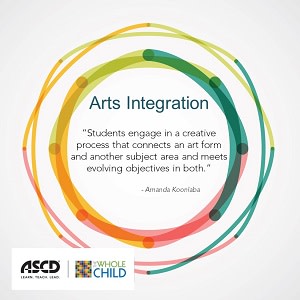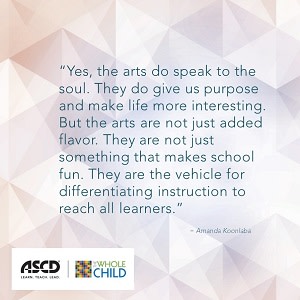New curriculum is often purchased as a solution to address students’ unique needs—such as learning gaps in mathematics that stem from the COVID-19 pandemic or additional social-emotional support and resources. Yet new curriculum rarely receives a proper rollout. This leads to overwhelmed and frustrated teachers, unproductive planning meetings, and disengaged students.
To best leverage time and resources, it’s essential to combine new curriculum adoption with sufficient support. A clear investment in planning, communication, and implementation pays dividends with better-supported teachers and higher quality instruction.
As a former teacher and now an assistant principal at a middle school in Texas, I’ve found there are several ways leaders can set new curriculum implementations up for success in their schools and districts.
1. Give teachers time to learn the curriculum
Ask any teacher what they want more of, and they will unanimously reply: time. Considering staff shortages and other challenges in schools right now, giving anyone more of this resource sometimes seems impossible. But skimping on time required for introducing a new curriculum is a surefire way to compound issues of teacher fatigue and burnout in the long run. School and district leadership teams need to work together with the curriculum company’s representatives and plan the implementation process and milestones well in advance, building in plenty of time for teachers to learn and integrate the curriculum.
One of the best byproducts of a well-planned implementation that clearly designates staff roles it that it also protects team culture and empowers teachers to take advantage of a space designed for productive development—not retroactive feedback about what didn’t work.
2. Allow autonomy within the curriculum
Curriculum is a resource, not the law of the land. Viewing curriculum as unmodifiable is a common misstep among school leadership and staff. A rigid approach to curriculum implementation and teaching, especially with a new curriculum, guarantees compliance at best, and fatigue and burnout at worst. The best teachers I’ve ever known all show passion and ownership for what they teach. They don’t resort to cookie-cutter lesson plans or teach in a robotic way. Sure, new teachers might cling to resources that are laid out in a step-by-step way until they become more comfortable in the classroom, but once teaching comes more naturally, those same new teachers should have the freedom to modify and adjust a curriculum as they see fit.
Curriculum is a resource, not the law of the land.
Just because a new curriculum is adopted doesn’t mean that lessons or materials can’t be enhanced, modified, or even skipped. This doesn’t imply throwing the curriculum out, but rather respecting the balance between skills and resources in the art of teaching. What matters is that teams agree on what they’re teaching, not how each detail is planned.
3. Encourage teachers to ask for and listen to student input
There are many great things about students, but their honesty about their learning is one of their best qualities. I have yet to meet a student who didn’t want to provide input on the way they’re taught and how their teachers could make learning better. Learning is one of the most personal human processes, and we should take advantage of this built-in feedback resource.
In an article discussing how to personalize learning and build agency, Tom Vander Ark states that, “By bringing students into the PLC (professional learning community) conversation, we can truly give students the ability to take concrete and measurable steps to increase their learning.”
Students don’t need to miss class to be part of a PLC meeting. Rather, teachers can gather student input for discussion beforehand. This is only possible if teachers take the time to ask students for feedback as a routine part of their instructional cycle. Some sample questions might be:
- What’s your favorite part of learning?
- If you could change something about class, what would it be?
- What was your favorite lesson we covered last month? Why?
Sometimes it’s difficult for teachers to ask their students for honest feedback, but when it’s tied back to improving curriculum—and not necessarily a lack of knowledge, skill, or impact—it builds a bridge between teachers and students. We know each student learns differently, and this needs to be reflected in the lessons we create if we want a new curriculum to stick. Considering students’ feedback while implementing a new curriculum ensures not just equal learning opportunities for students, but engaged, active students involved in their own learning as well.
4. Provide supportive accountability to ensure fidelity
Anything worth implementing is worth overseeing. Since starting as a middle school science teacher many years ago, one of the most common complaints I’ve heard is that new initiatives are rolled out with no consistency, and they never stick. In some ways, this is natural; we need to constantly improve and iterate.
One of the ways that we can ensure sustainability of a new curriculum implementation is to hold ourselves accountable. It’s one thing if something is tried with fidelity and doesn't work, but it’s another thing if something is never fully implemented. By following some of the steps outlined above, coupled with supportive accountability from leaders and colleagues, we have a much better chance of seeing new curriculum implementations through. Regular, ongoing meetings between leaders, teachers, and school staff is crucial, as is providing professional development opportunities for new colleagues and reflecting on feedback about what’s working—and not working. While the actual rollout might be quick, long-term support is the key to effective implementation.
I know what you’re thinking: This is all easier said than done—which is true. However, taking these steps offers more benefits than just successful curriculum implementation—you’ll create a community of learners that want the absolute best for their students.








